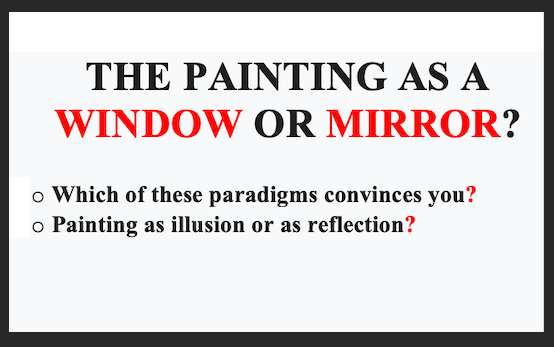
In the Renaissance, Alberti describes painting as an open window that allows a three-dimensional world to be seen through a two-dimensional plane, i.e., the illusion of depth and reality, where the viewer can "look" into the depicted scene as if looking through a frame.
The window metaphor explains how linear perspective makes objects appear smaller as they move further away, creating the sensation that the viewer is seeing them through the space of a window. The painting ceases to be merely a painted surface and becomes a way of seeing and understanding the world, offering a frame work and focal point for perception.
The window acts as a frame that organizes the visual chaos of the real world, focusing and selecting what is represented within the painting. The idea of the window has also been used in literature and philosophy to discuss the relationship between the internal and the external, and how art can open us to other worlds or realities.
The Painting as a Mirror can be interpreted as the idea of art reflecting reality, present since Plato, recalling his critique of mimesis, as a copy of a copy. Works of art can be a mirror of a society’s beliefs, values, and conflicts at a given time. The artist can use the mirror within the work to reflect on the meaning of art, how it represents reality, and the role of the viewer.
Historically, the mirror in art has served to represent themes such as: (1) vanity, (2) the passage of time, (3) self-exploration, and (4) reflection on the human condition. In psychology, the “mirror effect” describes how other people’s flaws or characteristics bother us because they reflect our own flaws, which we don’t want to acknowledge.
What is your opinion???
Leave a Reply